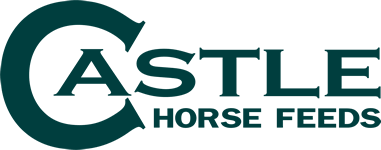
Good nutrition is essential, from the time of conception to the birth of a healthy foal. Once the foal arrives, nutrition continues to be vital for both mare and foal to support optimum growth and development. Read on for some essential advice to help produce a healthy youngster.
The first few months
During the first few months, most of the foal’s nutrition comes from milk, so the focus should be on feeding your mare to support optimum lactation.
Lactation itself is the most physiologically demanding period in a mare’s life. A lactating mare gives 3% of her body weight daily in milk production and nutrient requirements are greater than any other class of horse, except racehorses in full training!
During peak lactation (0-3 months), your mare’s energy requirements are double that of maintenance, with an increased appetite (2.5 – 3% of body weight) to fuel milk production. Providing suitable energy and quality protein in the first few months is essential, so that your mare can produce nutritious milk to support the rapid growth of her foal. Mares in peak lactation can produce up to 5 gallons of milk daily, so fresh water should always be available. Micronutrients like vitamin A, calcium, phosphorus, iron, copper and zinc will also be in high demand.
Whilst good grazing makes a significant contribution to your mare’s requirements, she will likely need additional feed to meet the demands of lactation and balance deficiencies in the grass. If your mare is in good condition, a high specification balancer is best, but if she needs more support, a specifically formulated stud feed providing higher levels of energy and good-quality protein is ideal.
Weaning
From three months, the nutrition in mare’s milk will start decreasing ready for weaning, a significant transition in a foal’s life, occurring around 4 to 6 months. Small amounts of a suitable complementary feed, based on the foal’s growth and condition, can be introduced to coincide with this decline. This will not only help maintain condition when weaned but will also help the foal’s digestive system and microbes to get used a different source of feed. Additionally, yeast-based prebiotics can be beneficial to support hind gut microbes and help keep the transition as smooth as possible.
As the nutrition in your mare’s milk declines, her feed can be reduced. After weaning, she can be fed as normal, based on condition and workload. However, if your mare has lost condition following lactation, it’s important to re-build it.
Post-Weaning and Beyond
Regardless of the foal’s future use, the main aim is to support his or her genetic growth potential. Weanlings need good-quality protein containing the essential amino acids lysine, threonine and methionine for growth. Consider feeds with peas, linseed and soya, which have an excellent amino acid profile.
Foals reach 50% of their adult height by 6 months and 90% by the first year, but they need to maintain slow and steady growth, so the right energy is important. Forage should always form the basis of the diet for good digestive health and is ideal for correct growth. If your foal is weaned during summer, grass should supply all the energy they need. If weaning occurs in the autumn or winter, good-quality, digestible forage like haylage, is perfect for growth and condition.
If your foal needs additional calories, digestible fibre like grass pellets and beet pulp are ideal, along with sources of oil like linseed and soya. Feeds including these will help provide the right energy for controlled and steady growth, whilst reducing the chance of developmental disorders associated with feeding high levels of cereals.
Vitamins A, D, E and minerals like calcium, phosphorus, copper and zinc, are all fundamental for growth and development. These can be provided through feeding a high-specification balancer or recommended levels of a stud feed if your youngster needs more energy to sustain growth and condition.
Monitoring Growth
Monitoring your foal’s growth by regular weight taping and plotting this on a graph can help assess any potential problems. Youngsters that are growing rapidly will produce an upright curve which is an indication of too many calories and those that are growing slowly will show a flatter curve. These observations will allow you make necessary adjustments to get a steadier growth curve, which is healthier for a growing foal.
Muscle scoring is useful as it helps assess how well the youngsters’ protein requirements are being met. You can then adjust the protein supply if necessary, for optimal muscle development
Regular use of a Body Condition Scoring chart (BCS) is also beneficial to help maintain a steady rate of growth.
With the correct care and nutrition for your mare and foal through all stages of growth and development, you can help produce a strong, sound youngster with the right foundations for a long and successful career, whatever that may be.
If you have any questions about how to create the best diet for your mare and foal, or any other horse, you can contact our nutritionist Lisa at theteam@wordpress-388828-2624579.cloudwaysapps.com or call 01497 570345.
